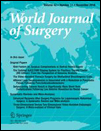The Predictors of Microscopic Vessel Invasion Differ Between Primary Hepatocellular Carcinoma and Hepatocellular Carcinoma with a Treatment History
Abstract
Background and aim
Previous studies have shown that microscopic vessel invasion (MVI) occurs in hepatocellular carcinoma (HCC) with a treatment history due to its poorer malignant behavior in comparison with primary HCC. The aim of the present study was to determine the predictors of MVI and overall survival in HCC patients with a treatment history.
Methods
This retrospective study included 580 patients who underwent hepatectomy and whose preoperative imaging showed no evidence of macroscopic vessel invasion. The patients were classified into two groups: primary HCC (n = 425) and HCC with a treatment history (n = 155). MVI was defined as the presence of either microscopic portal vein invasion or venous invasion, which was invisible on preoperative imaging.
Results
MVI was identified in 34 (21.9%) patients with a treatment history. A multivariate analysis showed that a high des-gamma-carboxy prothrombin (odds ratio [OR] 5.16, P = 0.002) and a large tumor diameter (OR 2.57, P = 0.030) were the significant predictor of MVI in HCC with a treatment history. Moreover, the presence of MVI (hazard ratio [HR] 2.27, P = 0.001) and tumor diameter >27 mm (HR 2.04, P = 0.006) remained significant predictors of the overall survival in HCC with a treatment history. The tumor diameter cutoff value for predicting MVI (27 mm) in HCC with a treatment history was smaller than in primary HCC (37 mm).
Conclusions
The presence of MVI was a significant predictor in the HCC patients with a treatment history. The tumor diameter is an important factor that can be used to predict the presence of MVI, especially in HCC with a treatment history.




